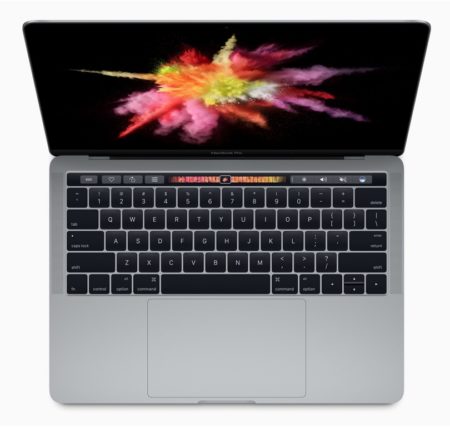It is hard to believe but in back-to-back computer events Microsoft has generated more excitement, delivered more innovation, and just plain provided “more” in out-delivering Apple.
Round One
Two days ago Microsoft unveiled its Surface Studio, an all-in-one computer with a lot of design elegance at the hardware level—much like Apple. The new enterprise-grade, all-in-one computer has chops and beauty. But most impressive of all is it folds beautifully into a drafting table sized tablet that works with its Surface pencils.
MORE: You Might Not Need Microsoft’s Surface Dial, But You’ll Want It
But Microsoft didn’t stop there. They introduced the Surface Dial, an impressive new device that adds innovative integrations to software apps much like Apple’s Touch Bar. If one had to choose which device—the Touch Bar or the Surface Dial—will ultimately prove more useful and engaging it would be a tough call at this point, but probably lean more towards the Touch Bar.

01 – Apple’s new MacBook Pro with Touch Bar is cool indeed, but is it cooler than Microsoft’s Surface Studio and more useful to creatives? The market may not think so. Image: Apple
But here is the kicker. Other than another thinner, lighter, and of course beautiful new MacBook Pro, Apple didn’t really deliver anything else to that product that makes it more engaging for its core users—creatives, education and small and enterprise businesses. To be sure, both products are actually quite pricey for enterprise rollouts, especially Microsoft’s Surface Studio. But that may be part of the point. Surface Studio isn’t aimed at where Microsoft already dominates (big business), it’s aimed at Apple’s “center heart” customers—the creatives and artists who have always supported the brand.
From this perspective, Apple has missed something. Not only must they innovate to get their Macs into Windows enterprise territory, they must do that while preventing a massive sneak attack invasion into their creatives territory.
Microsoft didn’t just deliver a new computer, they delivered a final piece to a three-part Surface product line that started with the tablet format but has jumped to a true laptop and now a very cool desktop. While Microsoft’s own Windows 10 Creators software may not pose serious threats to what creatives now use on Macs, the hardware alone can because those creatives often use products (like Adobe’s and Autodesk’s) that work equally beautifully on Windows.
Closing Comments—Apple Losing Creative Edge
Apple has the full capacity to be creative and make stunningly beautiful software and hardware. But that isn’t the same thing as being innovative for creatives. There is a big difference.
MORE: Apple demolished by Microsoft at their respective PC events
Apple appears to have started this slide in not getting this difference back in 2013 when it released the ill-fated new Mac Pro. The shock there is the new Darth Vader Mac had many good things going for it, coupled with a stunning array of bad things. It wasn’t what desktop pro customers really wanted. Rather than pivot or adjust to the workstation Mac and serve their loyal customers, Apple has chosen to believe there isn’t a future in such a product line.
But what signal does that send to your most loyal, long-term customers?
It is true the iMac has turned out to be quite a versatile machine. We learned in our own research how much, and how many have felt that a type of “pro version” of the iMac could be created to serve the “gap” now apparent by the failure of the new Mac Pro. Well, guess who just beat Apple to the punch?
This is not a moment that would make Steve Jobs proud.



Reader Comments
[…] Source link […]
Comments are closed.